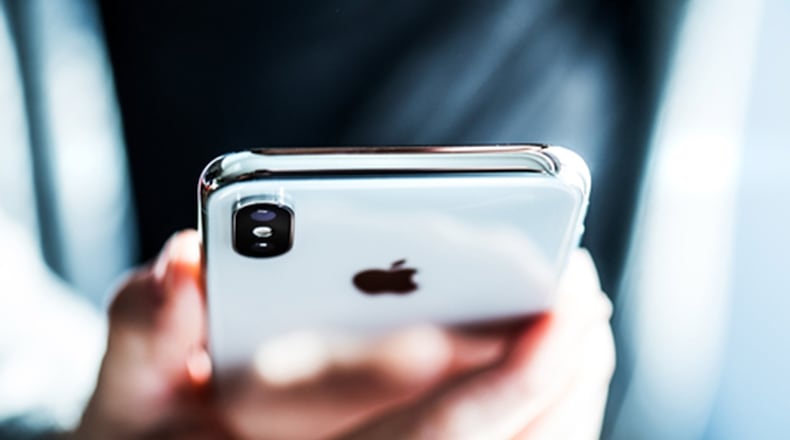By 2010, 58% of 12-year-olds owned smartphones. Now, more than 71% of 12-year-olds have phones, leading to what social psychologist Jonathan Haidt calls the great rewiring of childhood. “Play-based childhood ended in 2010, and it was replaced by phone-based childhood,” said Haidt.
The Thomas Cooley Professor of Ethical Leadership at New York University, Haidt is among the researchers who believe the rapid technological shift caught parents and schools unawares of the addictive power of smartphones.
Parents in the 1950s decried comic books. Television was viewed as a corrupting influence in the 1960s. A moral panic erupted over rock ‘n’ roll lyrics and video games in the 1970s and ‘80s. Are smartphones just another example of treating anything embraced by teens as an existential threat?
A key difference is that cellphones are accessible to kids every moment of the day and as common a component of adolescence now as braces. “The problems start when they take an internet-enabled device into bedrooms. Boys are going to disappear in porn. Girls are going to disappear in social media,” said Haidt.
Ten years ago, a metro Atlanta teacher reached out to me in alarm over her school’s reversal of its cellphone ban in favor of a “Bring your own learning device” policy. Her principal encouraged teachers to create educational opportunities for kids to use their phones in class. The teacher was flummoxed, asking at the time, “Is it useless to deny students their right to text? What happened to the idea that they are not adults and that they need discipline? Am I missing something?”
An email two weeks ago from another teacher about her school’s smartphone policy suggests we did miss something, something critical — the hypnotic hold that phones have on teens.
The teacher wrote, “They have taken away virtually all consequences for most behavior and there is no teeth to the ‘put your phones away’ statements. Students are only physically present in class, but they are digital zombies — no fault of their own.”
Whose fault is it? Is it parents who oppose total bans on smartphones because they want to be able to reach their kids in emergencies or to ask them if they want pizza or pasta for dinner? Is it educational optimists who thought smartphones could be harnessed to enhance learning only to discover it was tantamount to adopting a grizzly bear as a pet?
Over the years, social media companies have recognized the powerful pull that phones have on kids and honed manipulative features in their platforms that exploit children’s compulsion to connect with peers, even during algebra. Research has linked heavy smartphone usage with lower GPAs, poor sleep quantity, and anxiety, loneliness, and depression. A 2019 Central Michigan University study of tweens and teens found addictive phone use was associated with poorer academic achievement and lower grades. A 2018 Rutgers University study linked cellphone and laptop use during class with poorer exam scores, causing the lead researcher to ban laptops and cellphones during his own student lectures.
“It is completely insane to allow phones in schools,” said Haidt, speaking at the recent Excellence in Education summit in Atlanta. “If some kids are texting, everyone has to check their phones or they will be left out.”
Haidt believes students shouldn’t have phones before high school. His recommendation most likely to irk teens: No social media before age 16. He understands adolescents will protest but says social media will lose its appeal if parents collectively keep their children off it.
In a book coming out this spring, Haidt maintains the phone-based childhood is a threat to children’s well-being and coping skills, with girls most at risk from an unsparing social medium where judgments are harsh, arbitrary and constant.
Haidt titled his book “The Anxious Generation: How the Great Rewiring of Childhood Is Causing an Epidemic of Mental Illness.” He believes the epidemic is not simply a reflection of more teens feeling free to admit psychological distress. He cites worrisome indicators that don’t rely on self-reporting, including the surge in girls visiting emergency rooms with mental health crises, such as self-harm and suicidal behaviors. “Being depressed and anxious is now a normal part of being an American girl,” he said.
Even before the social distancing of the COVID-19 pandemic, the federal American Time Use Survey and the Monitoring the Future project at the University of Michigan saw steep declines in the amount of time teens and young adults spend with friends starting in 2012. Kids stopped meeting up at playgrounds and parks and converged on Snapchat, Instagram and TikTok.
Haidt says parents now overprotect children in the real world while letting them roam freely in the more dangerous virtual world. Setting aside phones and restoring play-based childhoods are essential to kids learning how to take risks and negotiate differences, he said. He urges parents and schools to remove the Bubble Wrap and let their kids climb, fall and try again.
About the Author
The Latest
Featured


